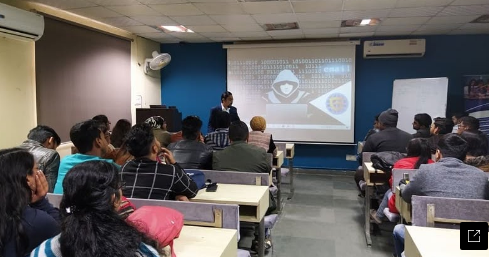Day by day Remote work has become a big part of our lives. Many companies now let their employees work from home. While this brings many benefits, it also comes with new security challenges. Keeping your network safe is more important than ever. Let’s explore why network security is crucial in a remote work environment and how you can protect your remote workforce.
Why Network Security Matters
Network security is all about protecting data and systems from cyber threats. In a remote work setup, employees access company resources from various locations. This increases the risk of security breaches. Cybercriminals are always looking for weak spots, and remote work can create these if not managed properly.
Common Threats in Remote Work
Several threats become more prominent when employees work remotely:
- Phishing Attacks: Cybercriminals send fake emails to trick employees into giving away sensitive information.
- Malware: Malicious software can infect devices, steal data, or disrupt operations.
- Unsecured Networks: Home networks may not be as secure as office networks, making them easier targets for hackers.
- Weak Passwords: Employees might use weak passwords, making it easier for attackers to gain access.
Best Practices for Network Security
Here are some best practices to keep your remote work environment secure:
Use VPNs (Virtual Private Networks)
A VPN is a tool that creates a secure connection between the employee’s device and the company network. It encrypts data, making it hard for hackers to access. Ensure that all remote employees use a VPN when accessing company resources.
Secure Communication Tools
Using secure communication tools is essential. Encourage the use of encrypted messaging apps and secure video conferencing tools. This ensures that any information shared between employees is safe from eavesdroppers.
Strong Passwords and Multi-Factor Authentication
Ensure that all employees use strong, unique passwords. Implement multi-factor authentication (MFA) wherever possible. MFA requires users to verify their identity using two or more methods, adding an extra layer of security.
Regular Software Updates
Keep all software up to date. Regular updates often include security patches that fix vulnerabilities. Make sure employees update their devices and applications regularly to protect against the latest threats.
Employee Training
Educate your employees about common cyber threats and how to avoid them safely. Regular training sessions can help employees recognize phishing attempts and other scams. Awareness is a key part of network security.
Secure Home Networks
Encourage employees to secure their home networks. This can include changing default router passwords, enabling WPA3 encryption, and keeping their home devices updated. A secure home network reduces the risk of cyberattacks.
Use of Firewalls and Antivirus Software
Firewalls and antivirus software add extra protection. Ensure that all remote devices have these tools installed and updated. Firewalls monitor incoming and outgoing traffic, while antivirus software detects and removes malicious software.
Access Controls
Limit access to company resources based on roles and responsibilities. Only give employees access to the information and tools they need to do their jobs. Regularly check and update who can access your system to reduce the risk of unauthorized access.
Monitoring and Logging
Implement monitoring tools to keep an eye on network activity. Logging activities can help detect unusual behavior and potential security breaches. Regularly review these logs to identify and address any issues promptly.
Backup and Recovery Plans
Make sure to back up important data regularly. Have a plan ready to recover it if there’s a security issue. This includes knowing how to restore data and resume operations quickly. Regular backups can prevent data loss and minimize downtime during an incident.
Compliance with Security Standards
Ensure that your remote work setup complies with relevant security standards and regulations. This might include GDPR, HIPAA, or other industry-specific requirements. Compliance ensures that you follow best practices and legal obligations for data protection.
Conclusion
Network security is vital in a remote work environment. With the right strategies, you can protect your company and employees from cyber threats. Use VPNs, secure communication tools, and strong passwords. Keep software updated, train your employees, and secure home networks. By following these best practices, you can create a safe and productive remote work environment.



